Any hunger relief agency committed to offering healthy food choices and respectful experiences for their shoppers can use behavioral economics to support their mission. They may make relatively minor changes or significant changes. Check out the below gallery to see great examples of behavioral economics in action!
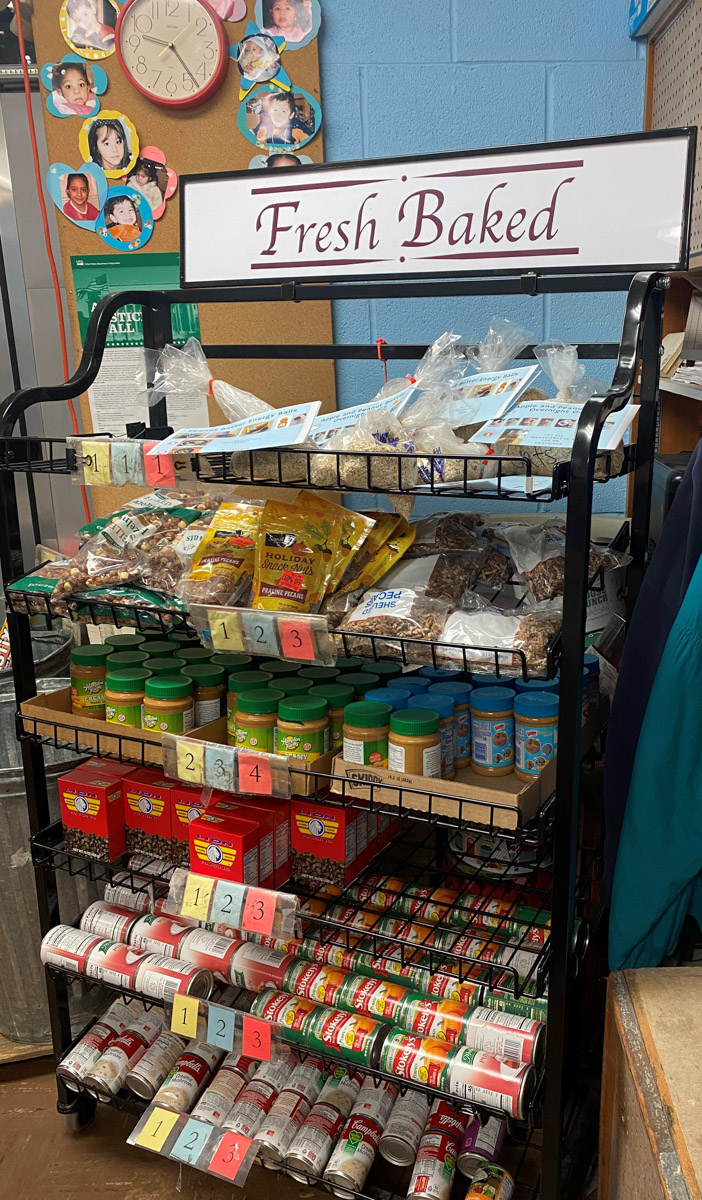
Des Moines Area Food Bank used shelving to increase visibility of products, making it easier for shoppers to find the foods they need. 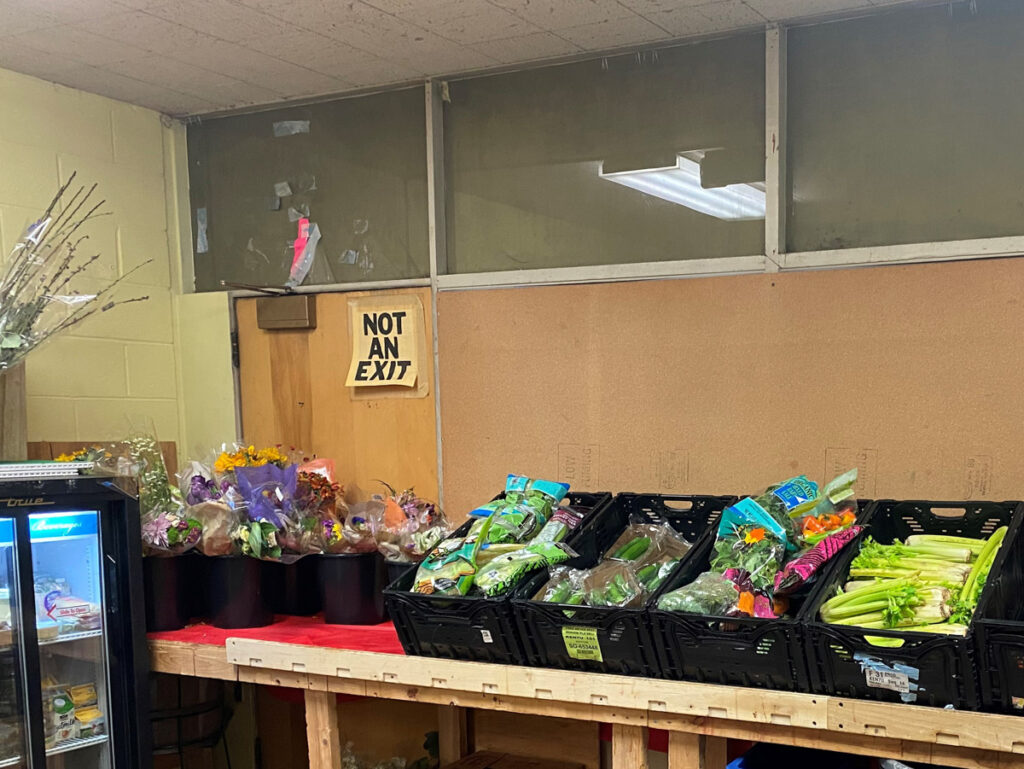
Des Moines Area Food Bank’s produce section uses angled crates to increase visibility. Shoppers have unlimited visits to this area. 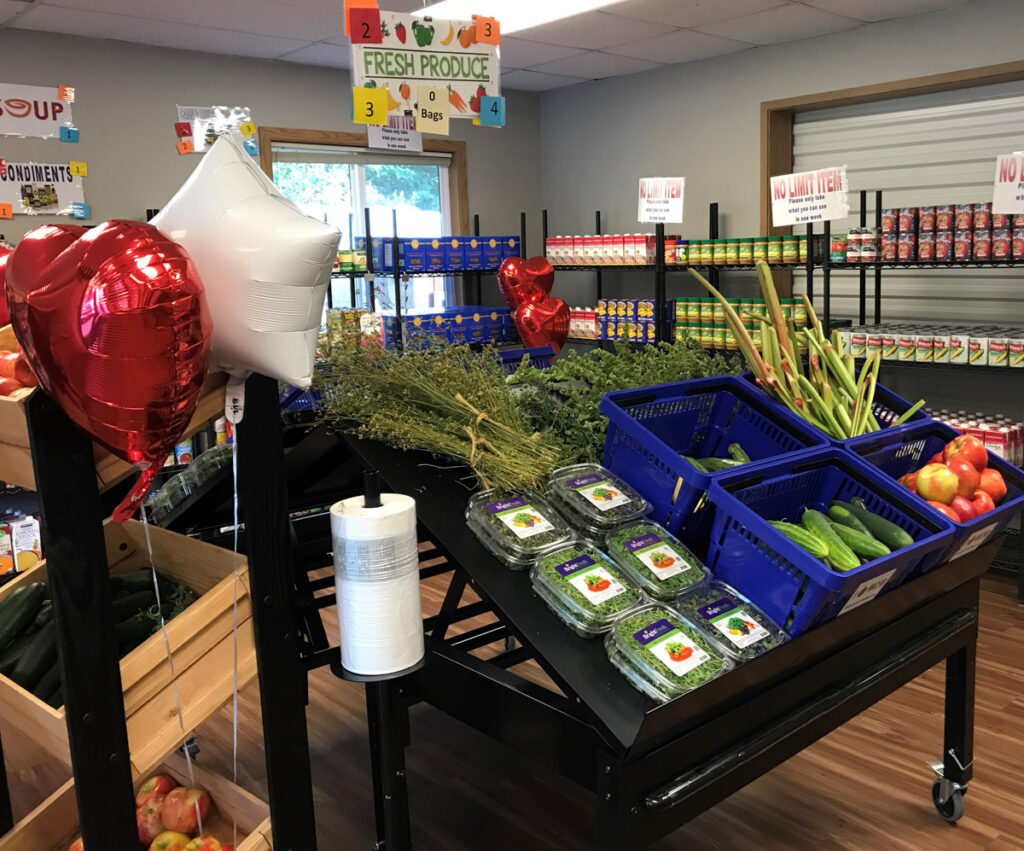
White Center Food Bank has a fresh produce stand using slanted shelves to increase visibility and offers produce bags for convenience. 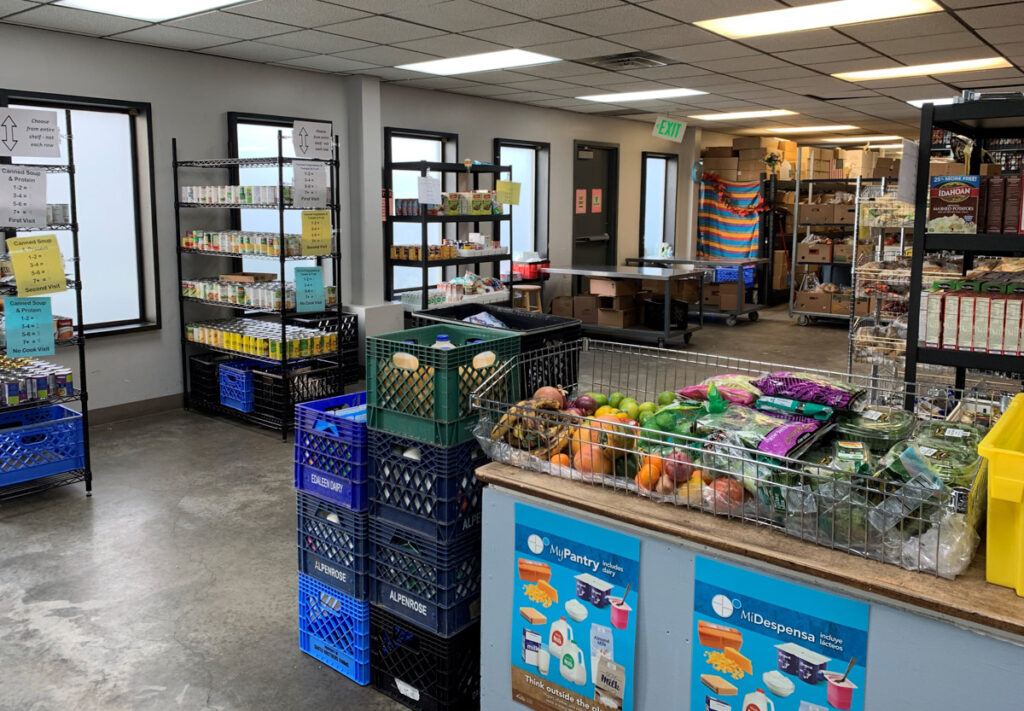
Kent Food Bank redesigned their space to display fruits and vegetables inside the entryway to encourage filling carts with produce first. 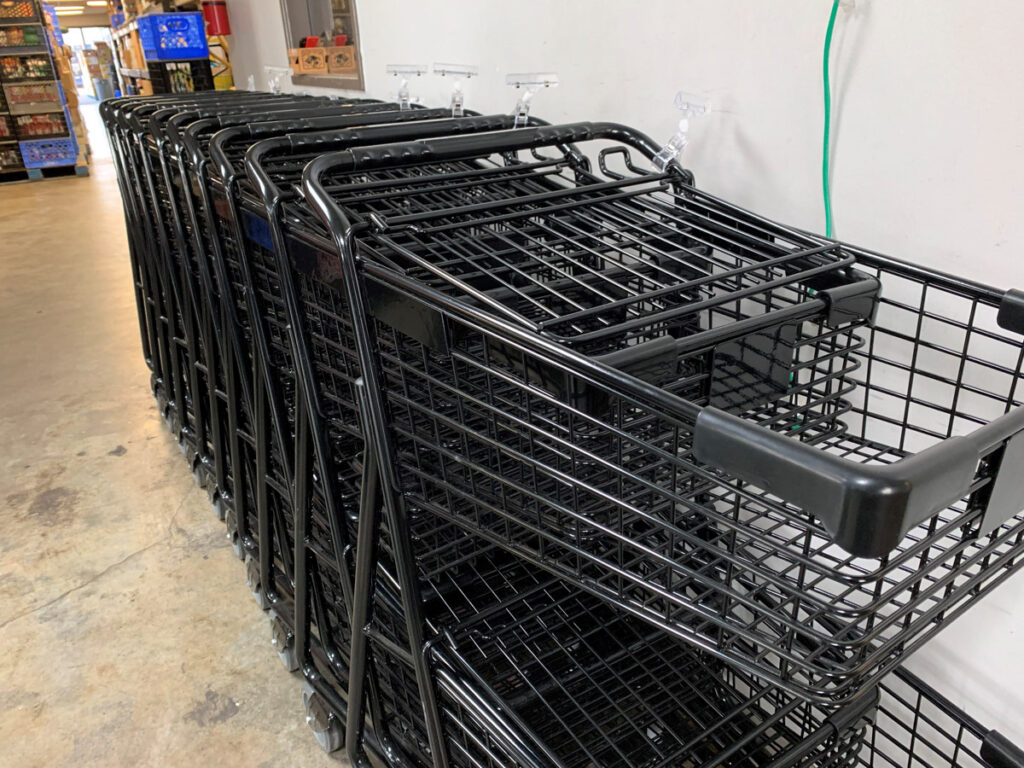
Kent Food Bank offers shopping carts to make the shopping experience easier and more pleasant for their shoppers. 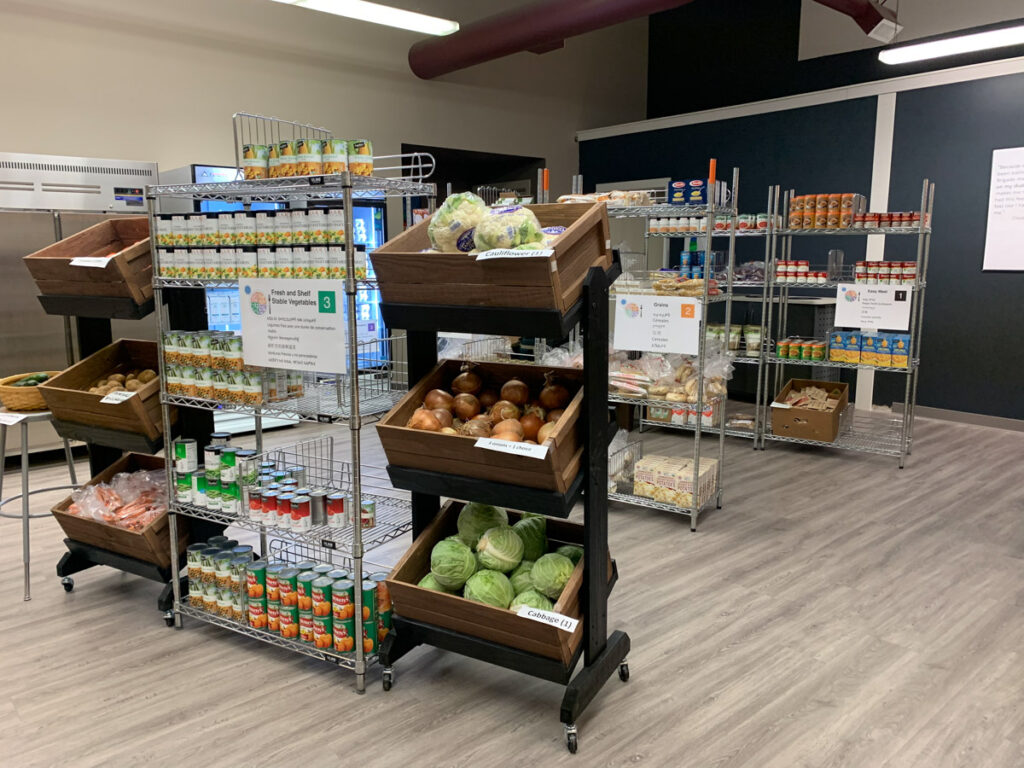
Chicken Soup Brigade’s grocery store design makes it easy to move around the space. Smaller display containers convey abundance. 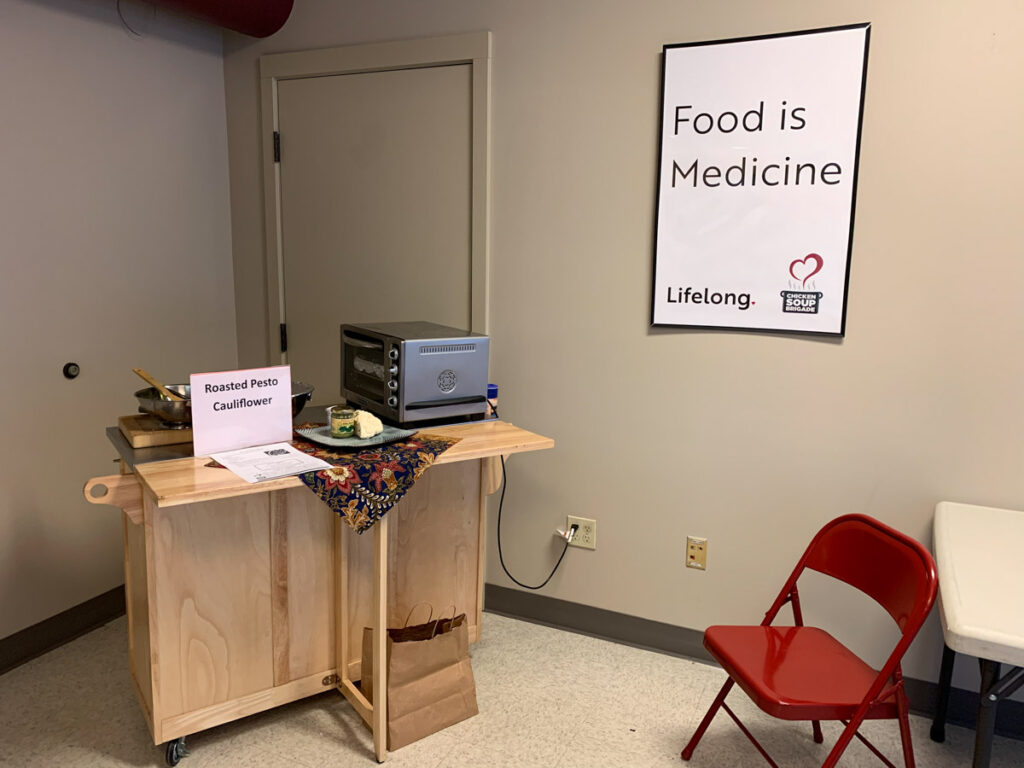
Chicken Soup Brigade uses a small cooking station in their pantry waiting area to offer tastes of new healthy recipes. 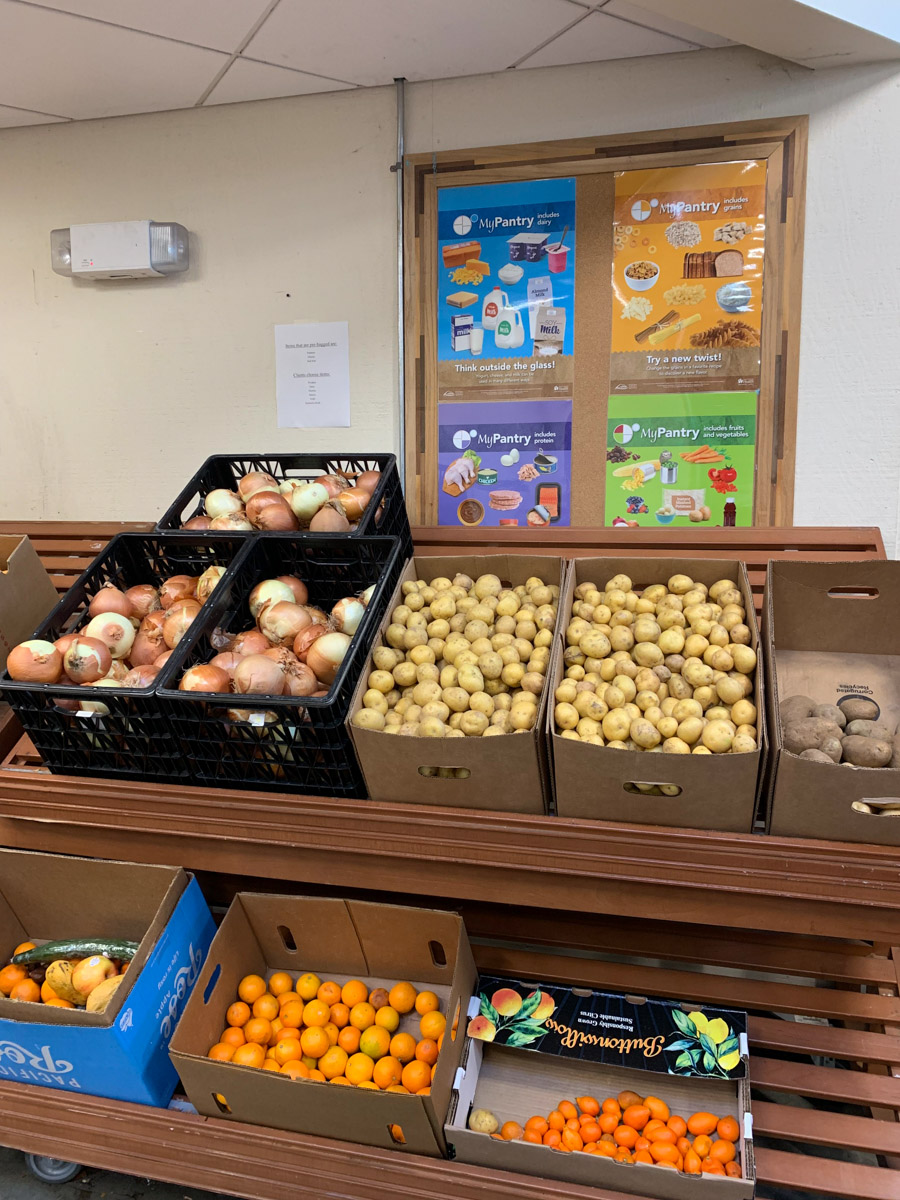
Salvation Army-Renton’s angled produce displays make it easy for shoppers to select foods. Colorful posters reinforce healthy choices. 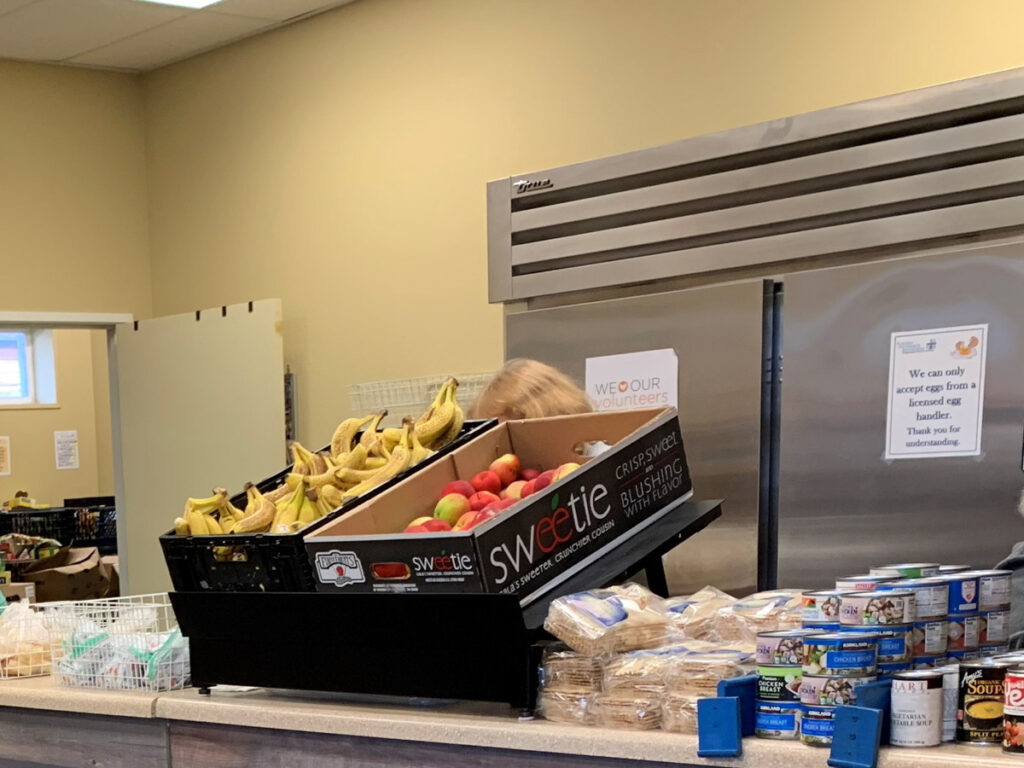
Plateau Outreach Ministries used an angled shelf on a countertop to increase visibility, helping shoppers not have to search through containers. 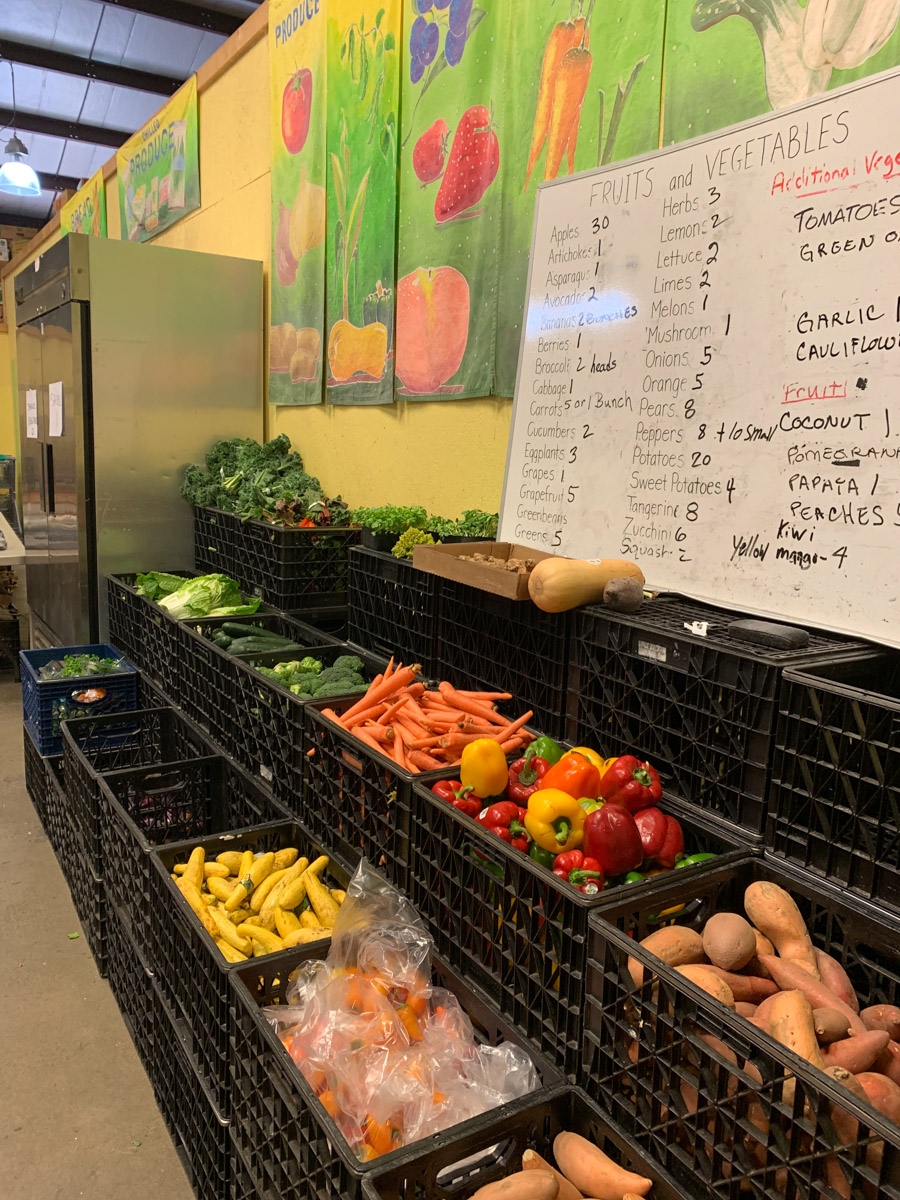
Large banners of colorful fruits and vegetables at Ballard Food Bank prime shoppers to add fresh produce to their shopping carts. 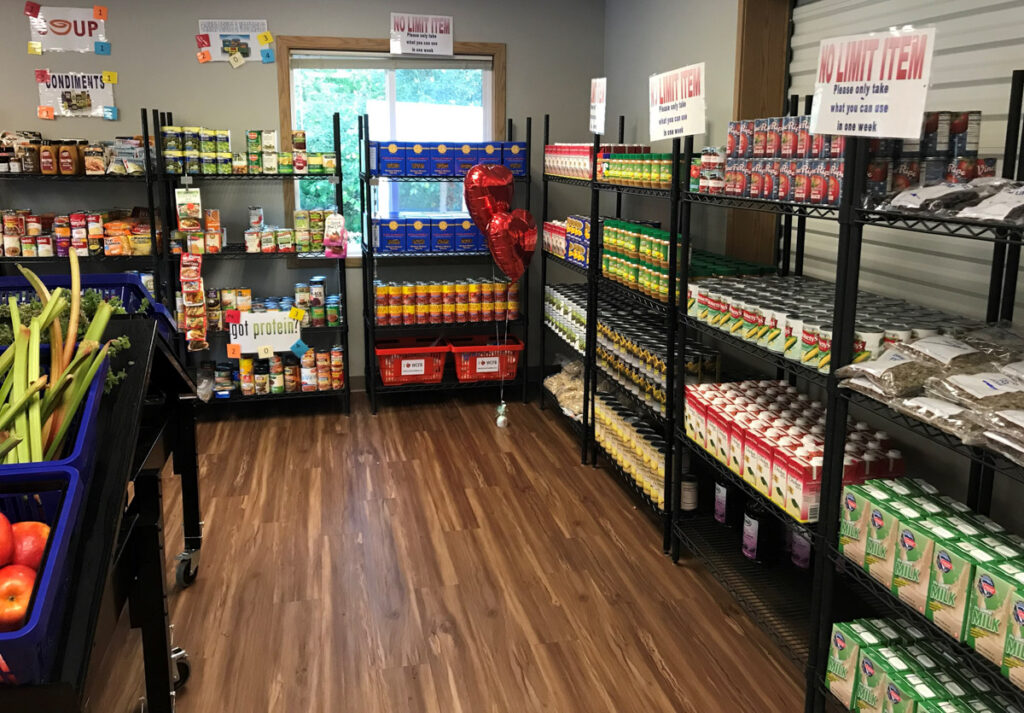
White Center Food Bank operates as a grocery store model that allows shoppers to peruse and select foods in the order and pace they prefer. 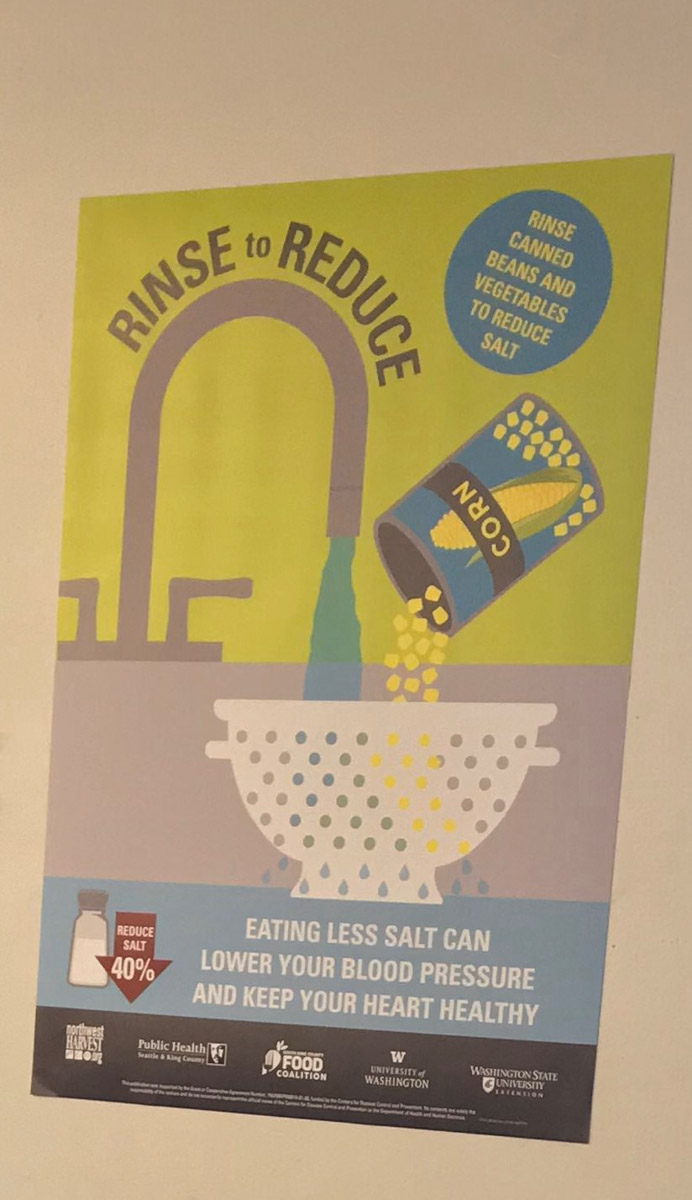
Tukwila Pantry utilized colorful posters to convey helpful nutritional information relevant to the foods distributed in their pantry. 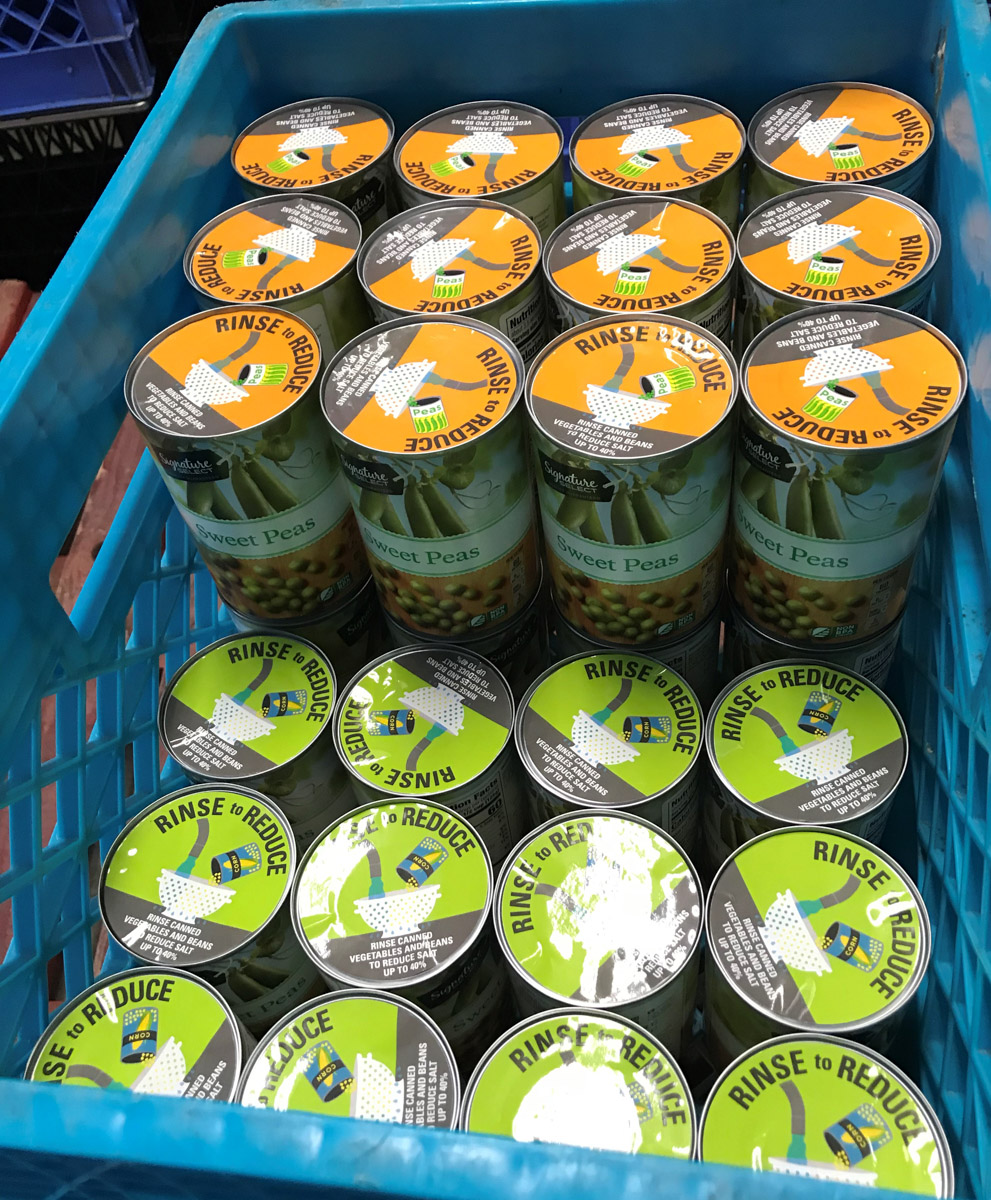
Tukwila Pantry used stickers on the tops of cans to share sodium reduction tips (“Rinse to Reduce”). 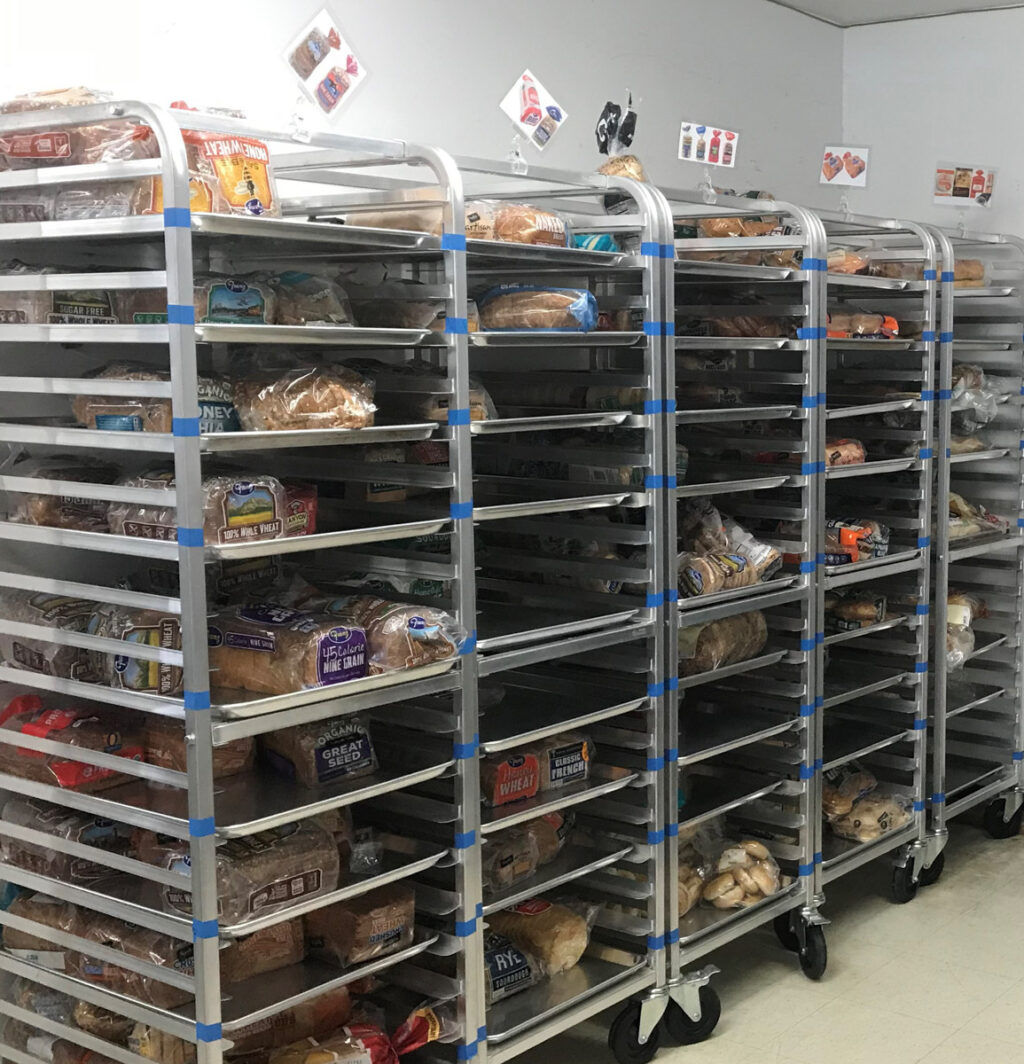
Tukwila Pantry used rolling bread racks with labels to make it easier for shoppers to find whole grain bread options they offer. 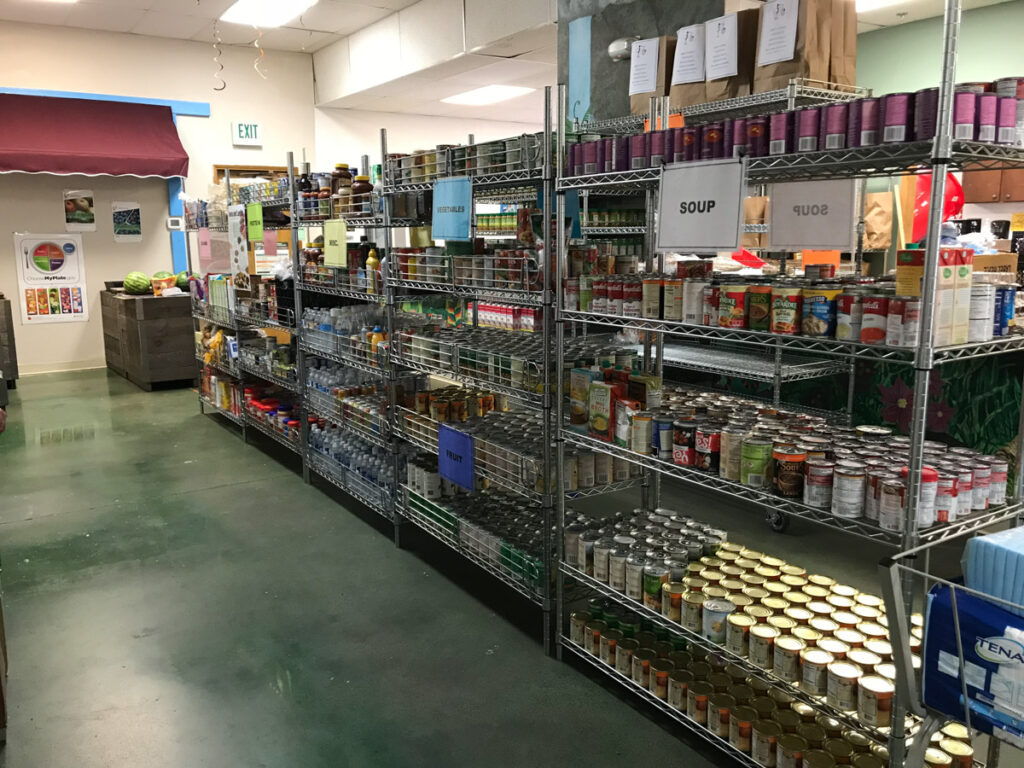
Multi-Service Center used shelving to increase the visibility of products and makes the space feel similar to a grocery store. 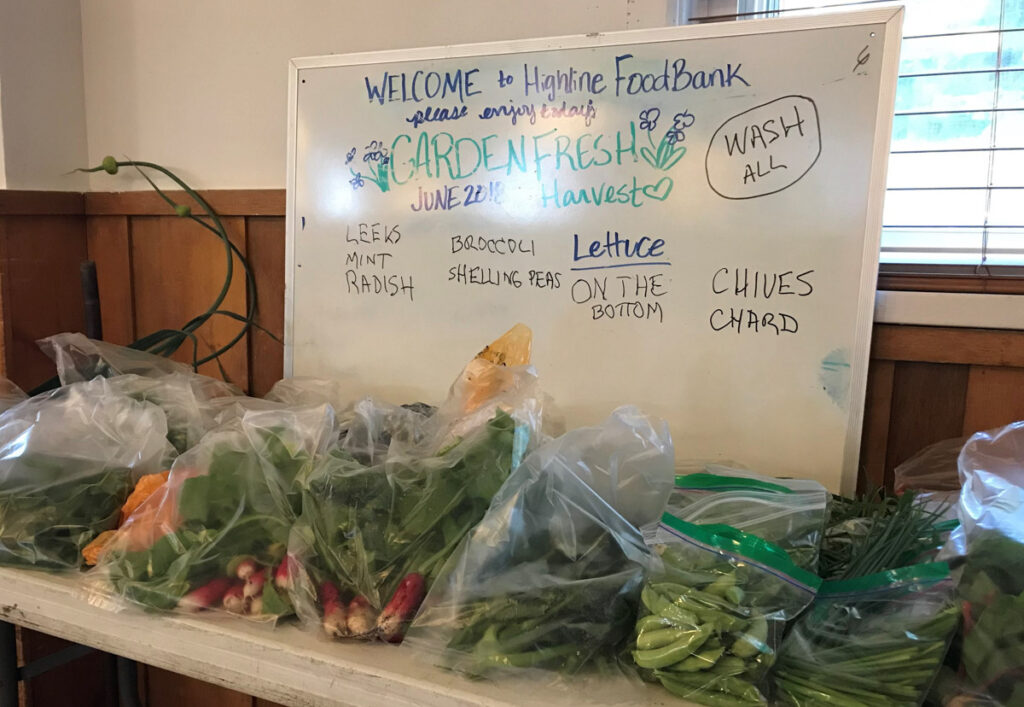
Highline Area displayed produce in clear bags making options easier to see. An erasable white board highlights available produce. 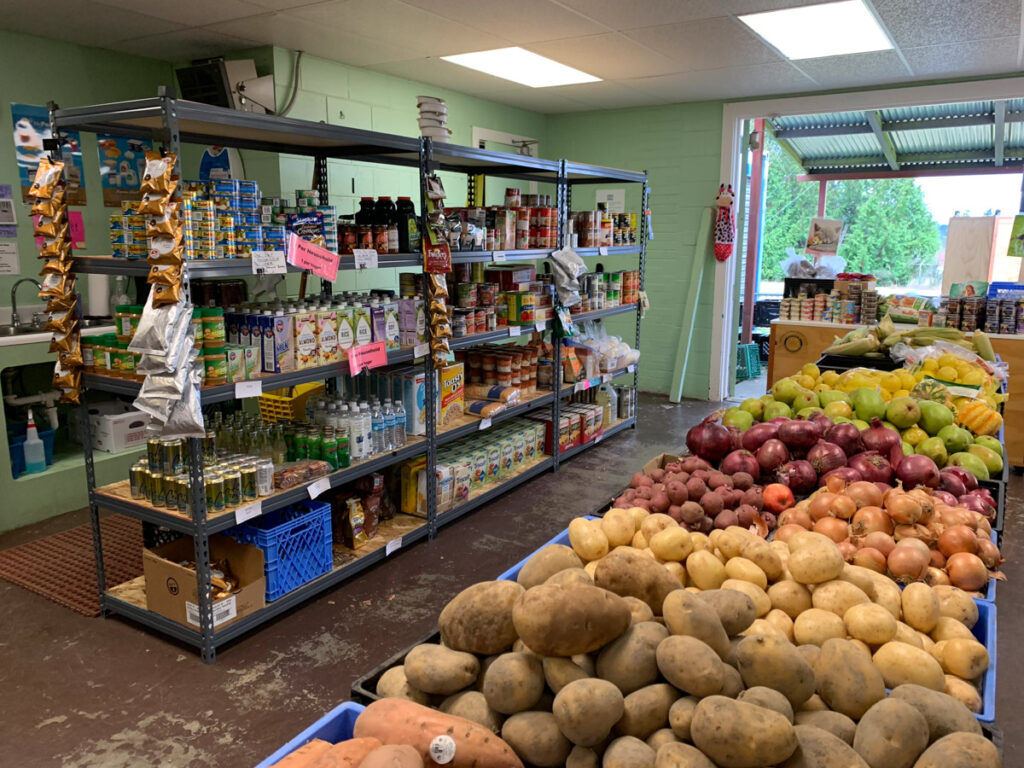
The Vashon food bank used a grocery store setup with organized shelving to ensure shoppers can easily see and select the foods they need. 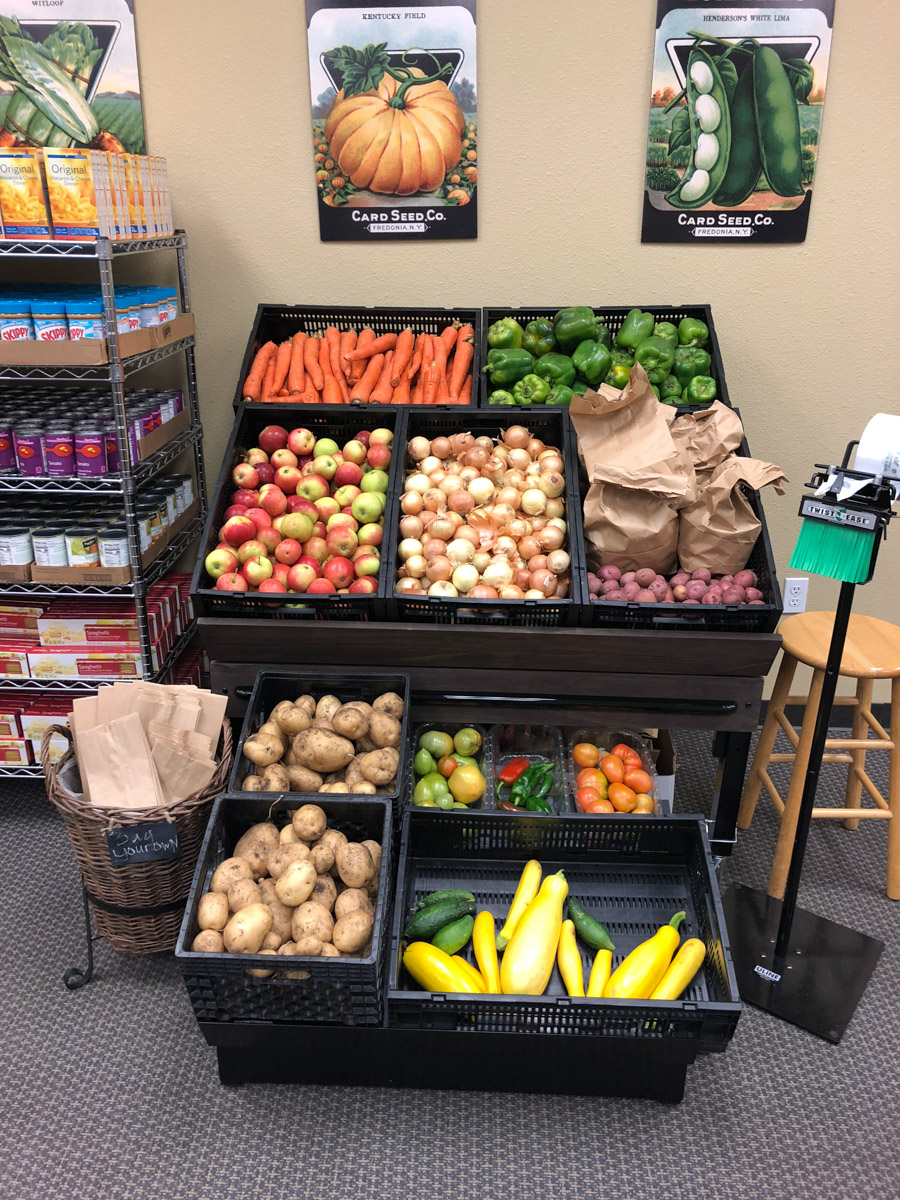
Plateau Outreach Ministries used smaller crates to increase the look of abundance. Visuals of produce on the wall also act as primers. 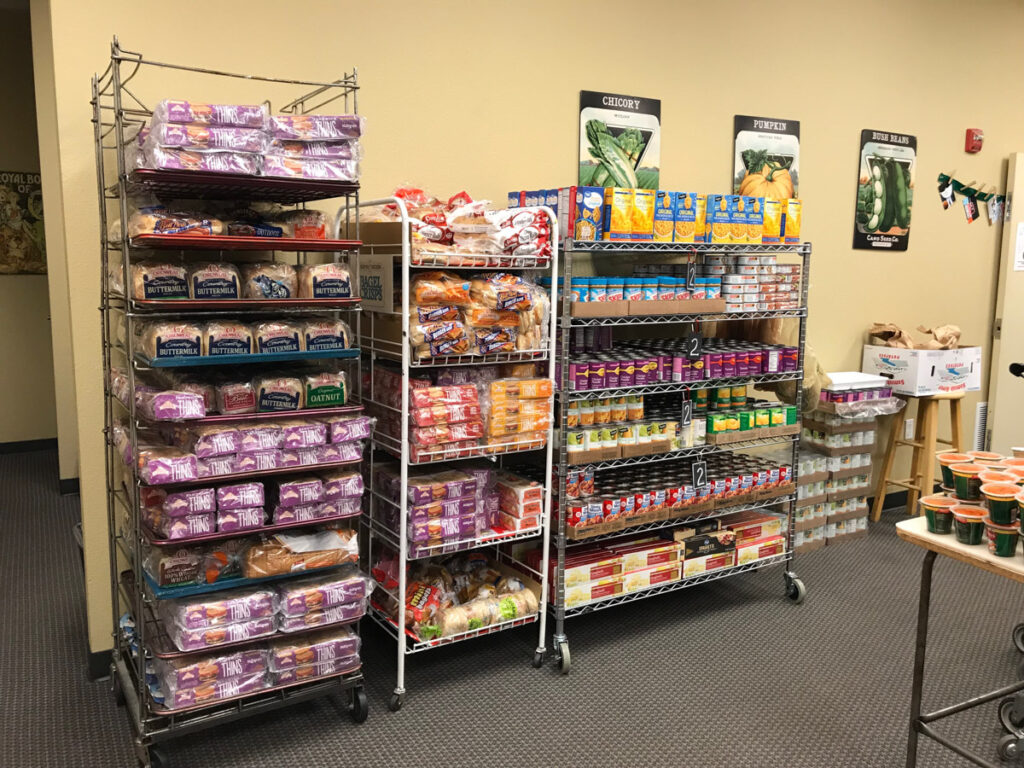
Plateau Outreach Ministries used shelving to display foods, making it easier for shoppers to find the foods they need. 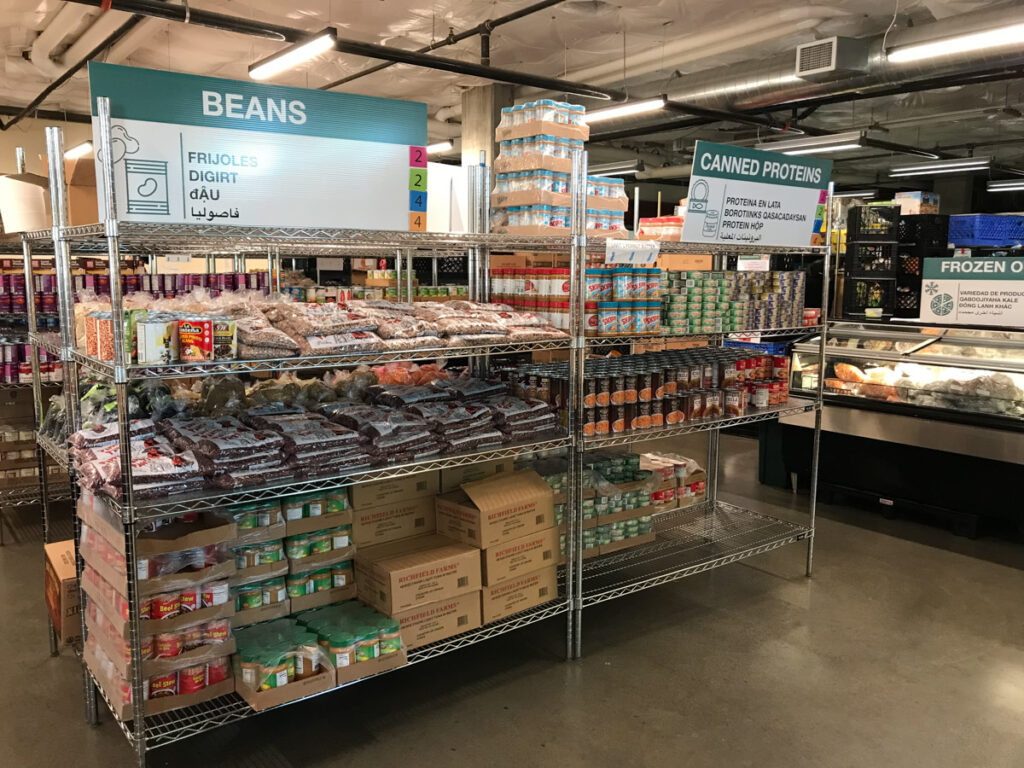
West Seattle Food Bank uses clear signage with multiple languages and images to communicate more easily with both volunteers and shoppers. 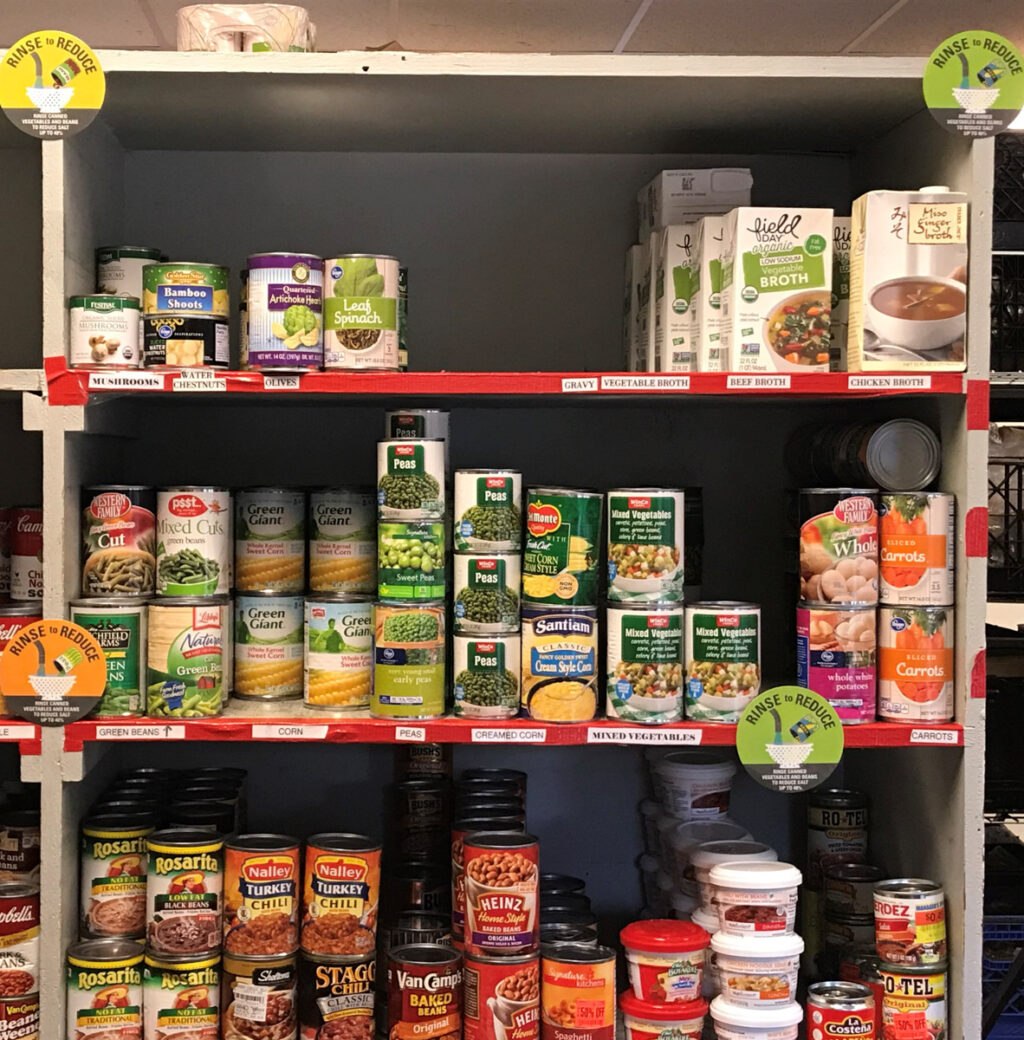
White Center Food Bank uses eye-catching shelf labels with clear and simple messaging as a way to offer nutrition education. 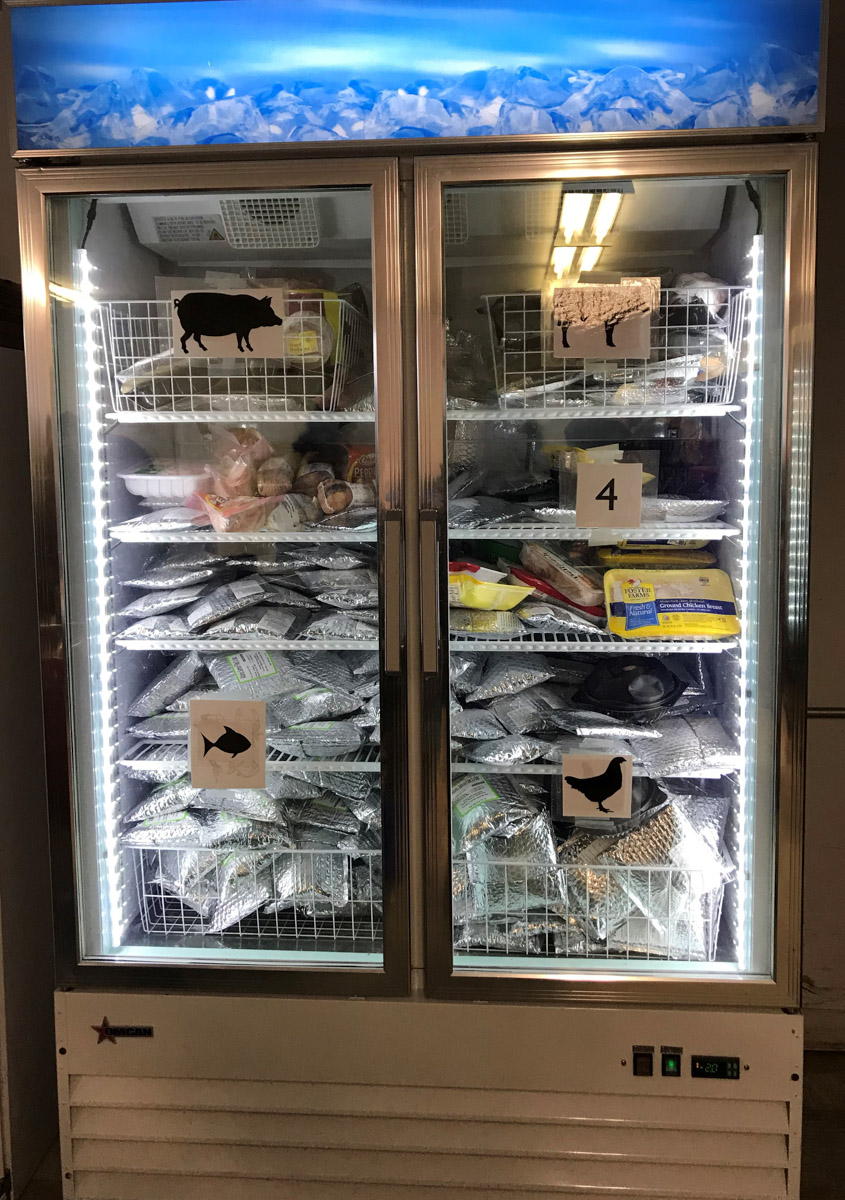
Tukwila Pantry used picture-based labels to identify types of meat available. This is helpful when serving multilingual shoppers. 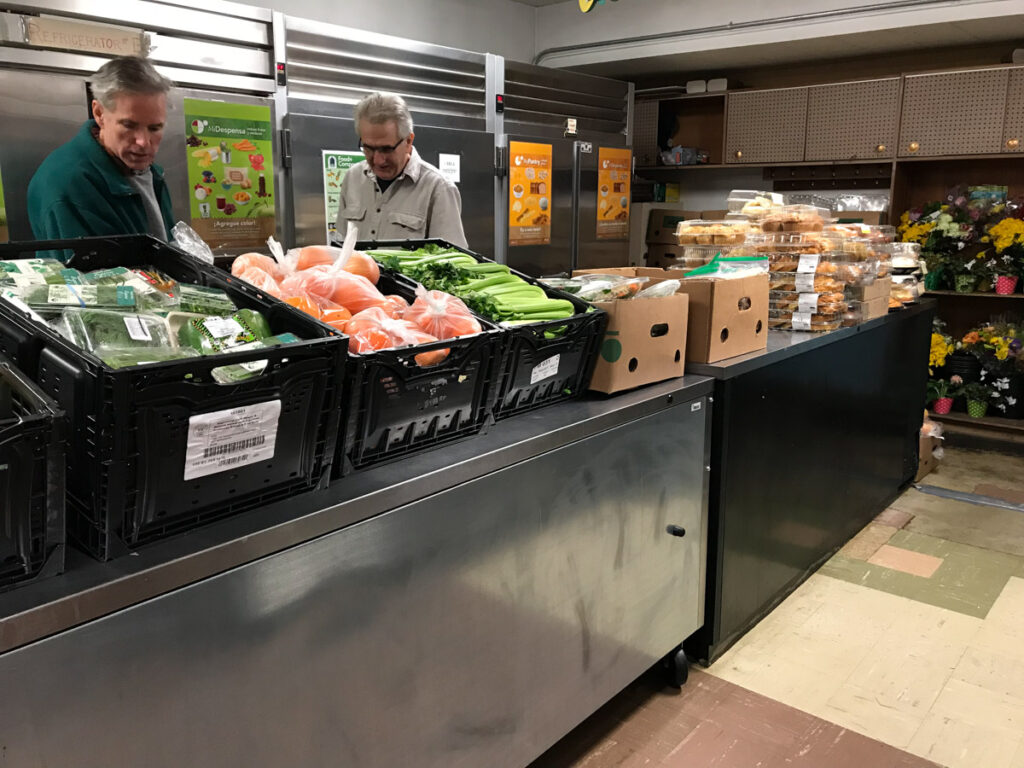
Des Moines Area Food Bank propped up crates and filled them completely to increase visibility and give the feeling of abundance. 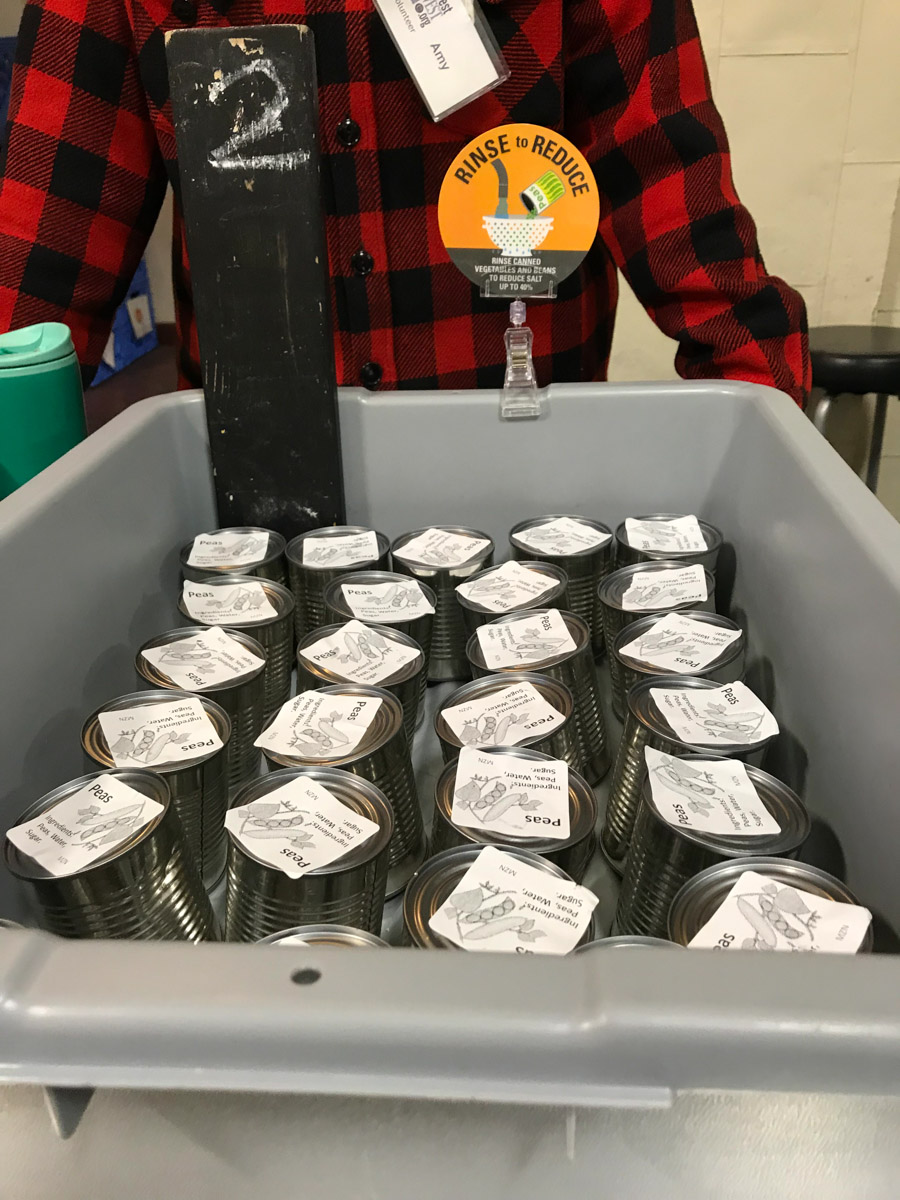
Northwest Harvest provides Rinse to Reduce signage near specific foods to remind shoppers to rinse canned food items to reduce sodium. 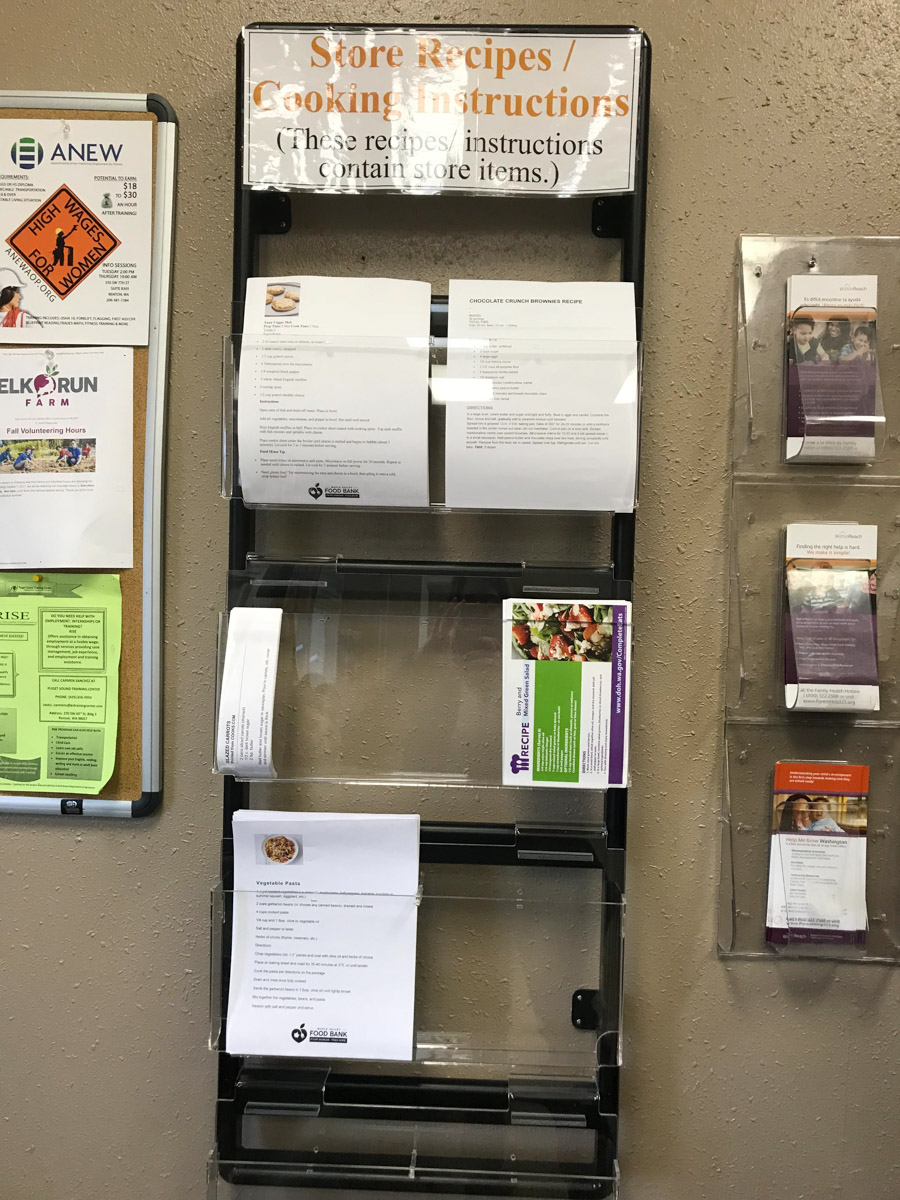
Maple Valley Food Bank offers recipe and cooking instructions that help introduce new food items to shoppers. 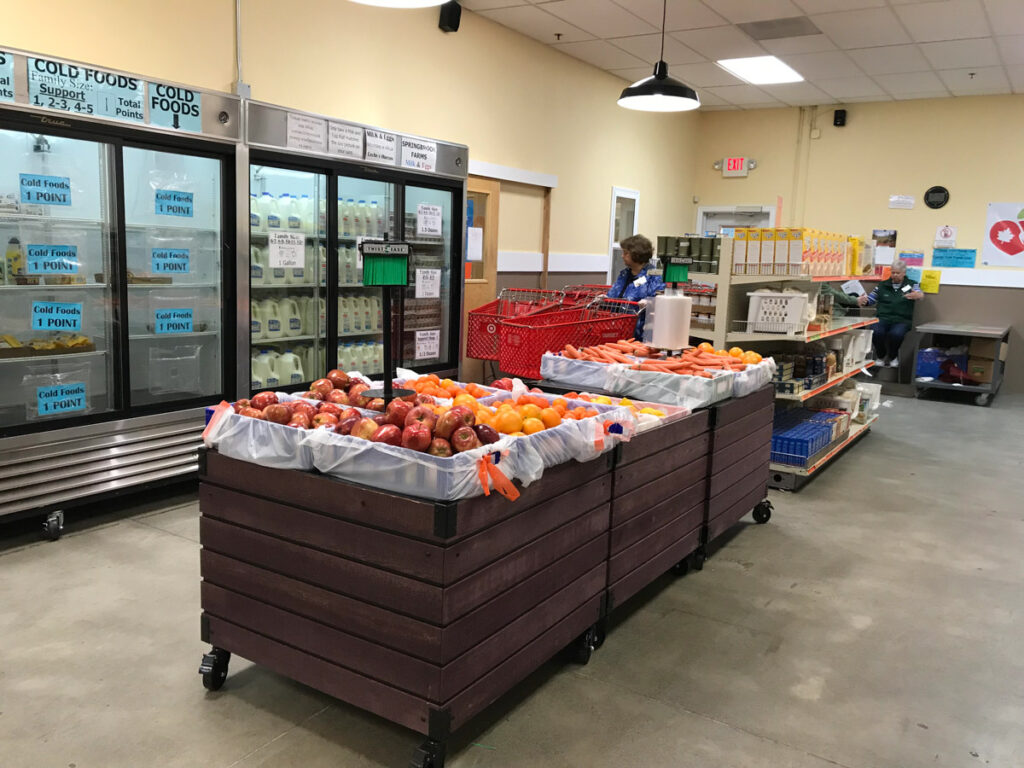
Maple Valley is set up similar to a grocery store with glass front coolers, shopping carts, and space to move freely. 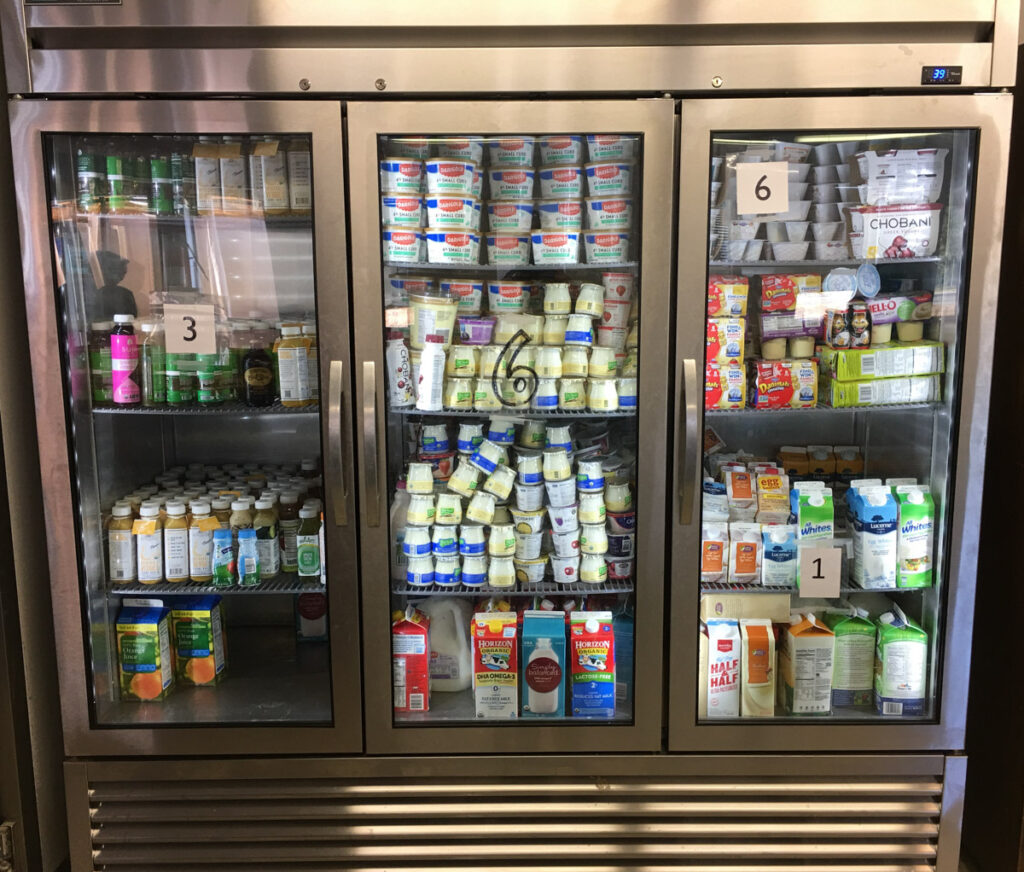
Tukwila Pantry purchased a cooler with clear doors so their shoppers would easily see the options stored inside. 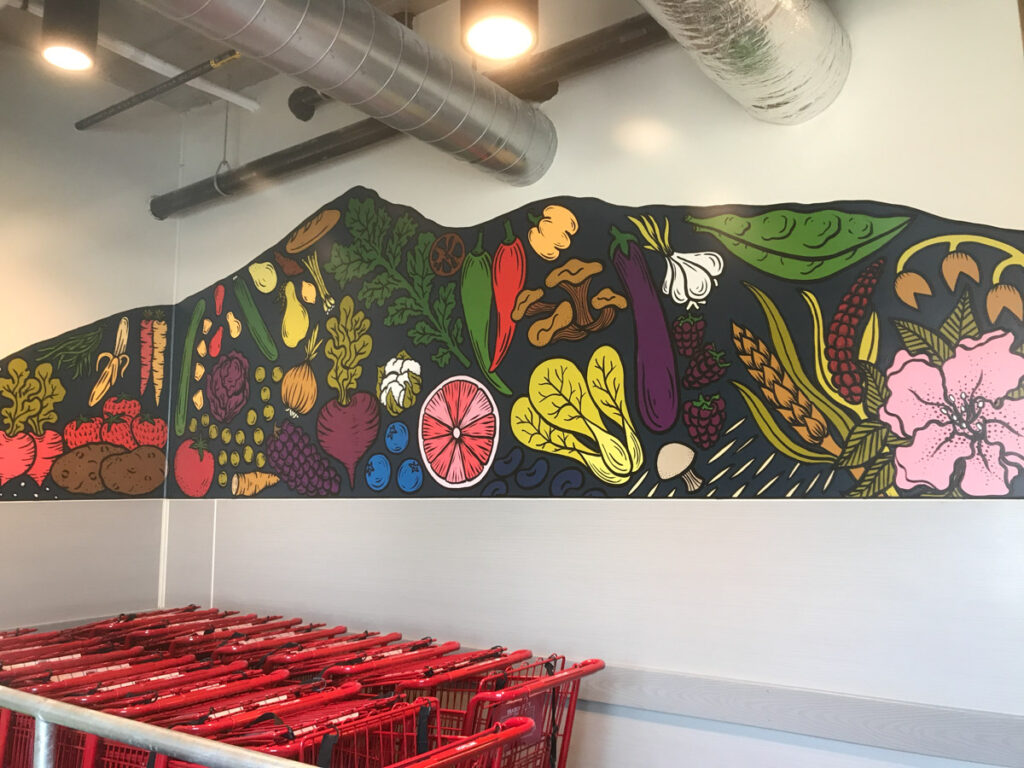
A colorful mural in Hopelink’s entryway welcomes shoppers and primes them to select produce during their shopping trip. 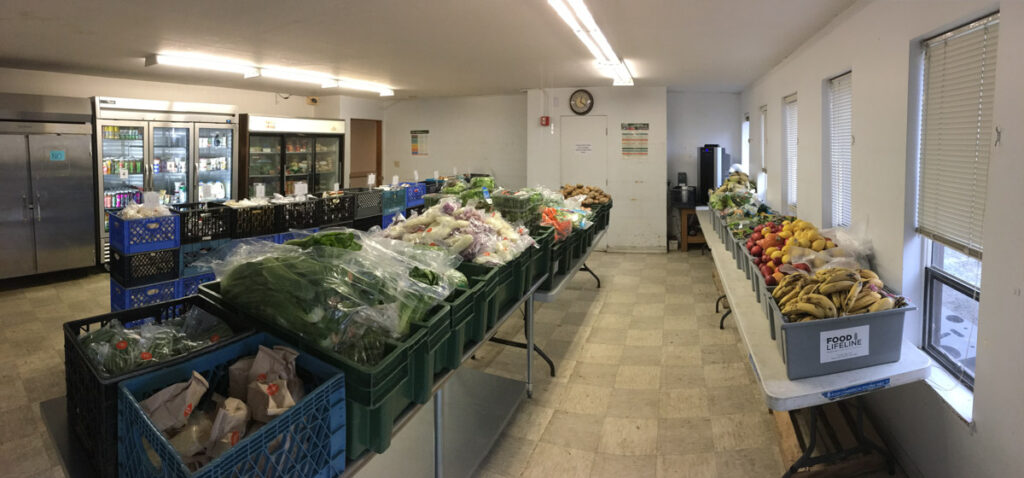
Tukwila Pantry displays abundant produce to influence a shoppers’ perception of a food’s desirability and ample availability. 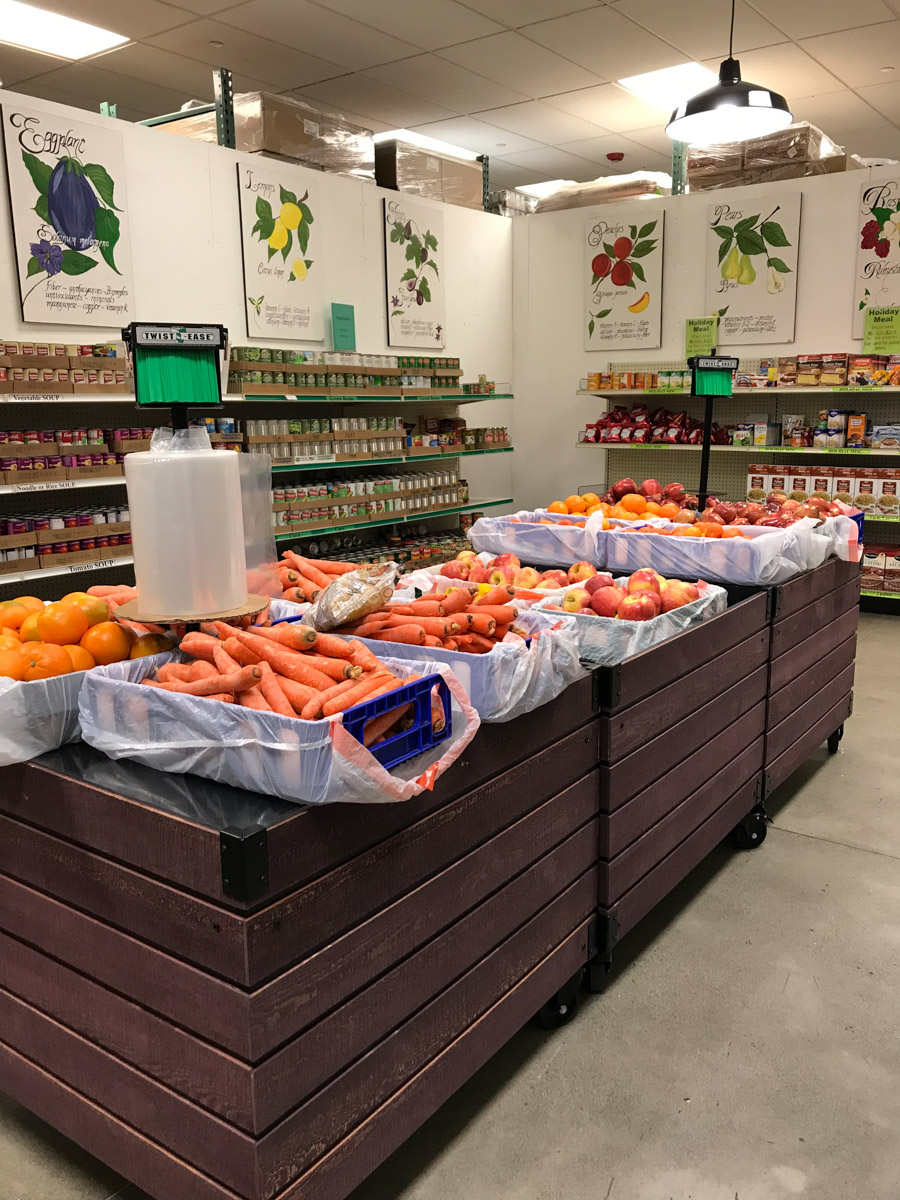
Maple Valley Food Bank displays colorful signage of produce and provides bags to hold produce items, making it easier to select items.